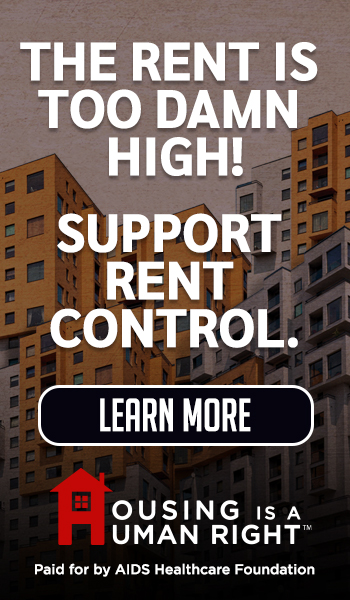Comments
MY VIEWPOINT - Los Angeles is facing a public safety crisis in the form of an epidemic of red light running and other traffic violations, which are dramatically increasing fatalities and injuries on city streets. This isn`t just about reckless drivers; it reflects failures in collective responsibility and governance that demand urgent, forceful attention..
Traffic collisions are, by and large, preventable. Numerous studies have established that, just as they have ascertained that federal, state, and local officials know how people get into traffic collisions, and where they are most likely to occur.
Allstate has ranked Los Angeles as one of the top 10 most dangerous cities to drive in America.
First and foremost, unsafe driving turns daily activity-getting to work, school, or the store-into a life-threatening gamble. When drivers run red lights or ignore traffic laws, they jeopardize not only their own safety but also the lives of pedestrians, cyclists, and other motorists. In 2023 alone, red light violations contributed to nearly 200 deaths and over 1,200 severe injuries across Los Angeles County, nearly 100/% increase since 2013.These are human lives shattered, families broken, and communities traumatized. It is intolerable that seasoned drivers now pause after a light turns green just to avoid being hit by a flagrant violator. That hesitation is not paranoia-it is survival.
From an economic perspective, the consequences reach far beyond tragedy. Los Angeles spends hundreds of millions more on traffic enforcement and accident aftermath costs than it recoups in fines. Frequent collisions cause costly delays that hamper commerce, increase insurance premiums, and divert public and private funds toward emergency responses and healthcare rather than productive investment. The burden disproportionately harms low-income families who may struggle with insurance, deepening economic disparities. Such costs cripple the city`s broader aspirations for economic growth, social and economic equity
Moreover, city officials bear responsibility. An audit found Los Angeles`Vision Zero program, aiming to eliminate traffic deaths by 2025, failed miserably due to insufficient political will, fragmented departmental coordination, and an imbalanced approach. This reflects weak governance-the kind that inhibits decisive action and innovation. Tackling the epidemic requires leaders who can unite agencies, set clear priorities, and sustain enforcement and infrastructure investments.
Why do we have to read sad news alerts, such as “a woman was killed after a driver ran a red light and T-boned the driver’s side of the car,” as was the case of a recent tragedy in Van Nuys?
The answer is shockingly clear: our system is broken. And government officials at all levels acknowledge that. To remedy it, they have pointed to some solutions, such as thoughtful infrastructure design and improvements, increased driver education, and implementing life-saving technologies. But that is not enough. We are faced with a present emergency, and it demands a great deal more. And it requires it now!
Red light running accidents are among the most avoidable. It has been determined that the red-light runner is almost always making a conscious decision to run a red. Regrettably, other people pay for the at-fault driver's actions. Inattentive or distracted drivers, either using their phones or unfocused for other reasons, such as eating or drinking, or simply being reckless are key factors.
Of course, running a red light is reckless driving. Yet this aggressive and careless behavior, this lawlessness, is considered today to be a common traffic infraction under California law. Hence, we must concentrate on altering the lawlessness of red light running, and the appalling disregard for traffic laws.
When a gun is used and innocent people die it is murder. Shouldn’t homicide describe the acts of a red-light killer?
Our traffic laws are written and regulated by the California State Legislature. The Attorney General, as the state’s chief law officer, must ensure the laws are uniformly and adequately enforced. Additionally, local governments can pass laws and govern their own affairs, giving them control over policies that directly affect them. Speed limits, for example, vary by jurisdiction. To bring change, our initial focus must be doubling down in our efforts to influence leaders to action, from the mayor and city council, to supervisors, and state legislators.
Enacting more stringent legislation is mandatory. Advocacy for improved intersection safety must also be raised with all of government’s legal authorities.
Robust police enforcement must also be restored and enhanced, overcoming today’s observed malaise. Since 2020, police traffic stops and citations have dropped significantly due to concerns about racial profiling, officer safety, and growing public resistance to law enforcement amplified by wider social tensions. Understandably, routine enforcement currently presents real risks for officers, but less police involvement encourages more violations of the law. While criticism of some police tactics may be valid, completely rejecting enforcement weakens public safety. Trust between communities and law enforcement must be restored so responsible policing can resume effectively.
Quite possibly, there is a previous action that can be replicated here. Uniting voices and focusing on traffic law shortcomings can lead to convincing lawmakers that enough is enough. In 1986 mothers fought an impossible fight and prevented construction of a state prison in their neighborhood. The triumph of the “Mothers of East Los Angeles,” as they were known, may be repeated by a newer cluster of voices using different designations, like, “Citizens Against Red Light Killers.”
Across the nation, red light running is a major cause of serious crashes, leading to tens of thousands of injuries and over a thousand deaths each year. A UC Berkeley analysis in 2023 showed that while red light and intersection violations are killing hundreds and severely injuring thousands each year, it is not just drivers who are being hit and killed. Of those seriously injured or killed, 18.16% were pedestrians or cyclists.
Los Angeles County, representing 25.1% of California’s population, has 31.1% (an average of 420 per year) of severe injuries and fatalities due to intersection violations, ranking it first compared to other counties.
According to a Los Angeles-based organization, SAFE (Streets are for Everyone), between 2021 and 2023, red light and intersection violations resulting in severe injuries alone cost the state approximately $985 million, averaging $327.3 million per year, with 28% of that ($270.4 million) attributed to medical costs alone. Between 2021 and 2023, red light and intersection violations resulting in fatalities cost California an estimated $6.96 billion, averaging $2.32 billion per year.
Shockingly, a report by an independent news organization, Crosstown, states that L.A. streets became increasingly lethal with traffic fatalities surpassing homicides for the past three years.
There is presently a proposal making its way through city hall to replace traffic cops with unarmed civilians. According to the LAPD traffic fatalities have outpaced homicides city wide. It is an ill-conceived idea, and the city council should outright reject it.
For all Angelenos-drivers, pedestrians, policymakers alike - this is the moment to act decisively, with clarity and urgency. The solutions exist. What is lacking is the collective will to implement them effectively. Because we must keep driving today, we must act today to address this crisis.
We must strengthen weaknesses in laws and punish those who brazenly and cynically violate them. Enough is enough!
The citizens of Los Angeles respectfully request that;
Mayor Karen Bass declares the red light running a PUBLIC HEALTH EMERGENCY.
Chief of police Jim McDonnell instructs the street patrol officers to strictly enforce traffic violations.
District attorney Nathan Hochman initiates, promotes and supports legislation to classify fatalities caused by red light running as homicides.
(Nick Patsaouras is an electrical engineer and civic leader whose firm has shaped projects across residential, commercial, medical, educational ,institutional, and entertainment sectors. A longtime public advocate, he ran for Mayor in 1993 with a focus on rebuilding L.A. through transportation. He has served on major public boards, including the Department of Water and Power, Metro, and the Board of Zoning Appeals, helping guide infrastructure and planning policy in Los Angeles. He is the author of the book "The Making of Modern Los Angeles.")















